Authentic Coquito is a traditional Christmas drink popular amongst Puerto Ricans with simple ingredients like coconut milk, warm spices, and rum. It is a must for any Puerto Rican holiday celebration and one that excites even non-Puerto Ricans.
This recipe was originally published in October 2018. This update includes a quick video and a link to my YouTube video!
What Is Coquito?
Coquito originated in Puerto Rico, though many other Caribbean islands serve a version of it. Haiti has cremas, Trinidad and Tobago has Coconut Ponche De Creme, and Jamaica has coconut rum punch. Coquito is popular in the Spanish-speaking Caribbean, with many different versions of the recipe. Mine is the best, though.
Coquito means “little coconut” in Spanish and is a holiday drink typically served from Thanksgiving through Three Kings Day (Dia de los Reyes) in Puerto Rico and other parts of the Caribbean. Though it’s most often served during the holiday season, you can serve it any time of the year. The original coquito recipe was an alcoholic beverage made with fresh coconut milk and pitorro (cane sugar moonshine). Sugar cane smoothed out the burn from the pitorro.
Right around Halloween, Puerto Ricans begin brewing a big batch of coquito to give it time to cure for their holiday parties. This coconut-based drink, along with many of our traditional foods, are staples at each family gathering. Christmas time, especially, is when you’ll see us enjoying a glass of cold coquito (maybe two or three).
Does It Contain Eggs?
While some people say this is a “Puerto Rican eggnog,” that’s inaccurate since authentic Puerto Rican coquito doesn’t contain eggs. You can turn this into a coconut eggnog with rum, but an authentic coquito is not made with eggs. Adding eggs to the coquito in Puerto Rico turns it into ponche. That said, each family has their own recipe, which may or may not contain eggs.
What Ingredients Are In Coquito?
The main ingredients in this coquito recipe are full-fat coconut milk, a spice tea, cream of coconut, sweetened condensed milk, light rum, gold or dark rum, spiced rum, pure vanilla extract (optional), ground cinnamon, and ground nutmeg.
The best way to make coquito is with freshly squeezed coconut milk because it gives it a smoother and less viscous taste than one made with a ton of canned milk. That said, if you don’t have the time or desire to make coconut milk at home, you can use evaporated coconut milk from the can.
Additionally, there are a few different varieties to make this an alcohol-free coquito, a vegan version, or to turn it into a dairy-free coquito recipe.
What’s The Purpose Of The Spice Tea?
Flavoring the coquito with a warm spice tea adds extra flavor while maintaining an appealing color. Adding the same amount of spices in their ground forms causes the drink to become murky and forms a sludge at the bottom of the glass bottle.
Add coconut water, one large cinnamon stick (or 3 small sticks), star anise, whole cloves, allspice berries, and a split vanilla bean to a pot. You can omit the vanilla bean if you don’t have one and add vanilla extract to the blender with the rums later.
You can also use a box of coconut water if you don’t have fresh, or you can replace it with plain water.
Bring the water to a boil over high heat and allow it to boil for 2 minutes. Turn the heat off and allow the spices to steep in the hot water for 10-15 minutes.
After 10 minutes of steeping, strain the tea into a blender and add the cream of coconut. It’s helpful if the spice tea is still warm so it can melt the fat cap that usually tops the cream of coconut. If your tea feels cool to the touch, heat it again until it steams, then add it to the blender or a bowl with the cream of coconut. Gradually whisk in the warm tea into the egg yolks, if you’re adding them, now, as well. Press the paste from the vanilla bean into the tea in the blender after straining the spice tea into the blender.
I prefer to use Coco Lopez cream of coconut because it has a prominent, less tinny coconut flavor. Cream of coconut is not the same as a can of coconut cream. The latter contains no sugar, whereas the cream of coconut is sweetened, so don’t make the mistake of using that.
How Do I Make Coquito?
Add the coconut milk, condensed milk, all three rums, ground cinnamon, and the nutmeg to the blender with the spice tea and cream of coconut. You can add canned coconut milk to the blender and the rest of the ingredients if you want a richer, creamier-tasting coquito.
Blend the ingredients for 1 minute on medium-low speed until smooth.
How Do I Make This Dairy-Free?
You can make dairy-free or vegan coquito by replacing the sweetened condensed milk with condensed coconut milk. You can use soy milk, almond milk, or oat milk if you decide to replace the canned coconut milk in this recipe with evaporated milk. I would stick with using the coconut milk since that makes it dairy-free (and vegan) without a bunch of replacements.
Don’t add eggs if you want to make this a vegan coquito recipe.
Do I Have To Use Three Different Rums?
You can replace the gold and spiced rum in this recipe with light rum if you prefer to keep it simple. I prefer the complex flavors the darker rums add to the coquito, so I always use them.
You can also make a more potent version by using 151. This type of rum is an over-proofed spirit and will give it more kick. Coquito should be made with Puerto Rican rum or, at the very least, a Caribbean rum. Palo Viejo, Don Q, Ron del Barrilito, or Bacardí, which is Cuban-born, are rums made in Puerto Rico.
Can I Make This Non-Alcoholic?
To make virgin coquito, replace the rums with more coconut milk or half-coconut milk and half-coconut water (or regular water) or more spice tea. Virgin coquito has a shorter shelf-life because there’s no alcohol to ward off bacteria. You’ll have to consume the virgin drink within 10 days of making it. I recommend storing it in the refrigerator instead of in the refrigerator door to extend its life, as well. The constant fluctuations from opening and closing the doors to the fridge, speed up spoilage.
Why Does My Coquito Have Foam and/or Chunks?
The chunks (or lumps) in the coquito are from coconut fat in the cream of coconut. You see that layer of fat when you open up some cans of cream of coconut. Shaking the can of cream of coconut and warming it with the spice tea will reduce the chunkiness.
The foam results from the additives in the canned milk, and the fat from the coconut milk gets excited. You can strain the coquito into the bottles if the foam or chunks bother you.
How Do I Store It?
The best thing about this recipe is that it fills 3 bottles. I store mine in 750-milliliter wine bottles that I buy from a local home brewing supply store or online. Using a decorative, airtight glass bottle is a fun way to gift this coquito to your friends and family, too. Most people couldn’t care less about decorative bottles but more about what’s in them.
Sanitize the bottles by pouring in hot water and leaving them for 10 minutes.
I add two or three cinnamon sticks to my bottles because cinnamon is a prominent flavor in coquito. Pour the hot water from the bottles, then add two or three cinnamon sticks. You can omit them if you don’t keep cinnamon sticks on hand.
Put a fine-mesh sieve lined with a clean tea towel on a funnel. Straining the coquito through the towel and sieve before curing it reduces clumping in it later.
Carefully pour the liquid through the strainer and into the bottles using the funnel. Leave a 1-inch headspace at the top of each bottle of coquito so you can shake the spices back into it later.
Refrigerate and let the coquito chill for at least forty-eight hours to allow the flavors to blend and the alcohol flavor to mellow out. I wouldn’t drink coquito the same day you make it, though. It’s always better the next day or a couple of days later.
How Do I Serve Coquito?
To serve coquito, remove the bottle from the refrigerator and give it a good shake to reincorporate the spices. When using fresh coconut milk, a small amount of separation occurs because it doesn’t contain the stabilizers as canned coconut milk. Shaking sets everything back in place.
You can serve coquito over ice, but I don’t because it waters down the drink, and I’m trying to get as much of that flavor as possible.
Serve the coquito in old-fashioned glasses with a sprinkle of ground cinnamon or grated from cinnamon sticks. To impress coconut lovers, dip the rim of your cocktail glass in a small amount of maple syrup, followed by a dip in coconut flakes to create a coconut rim.
We don’t do all that in our family. The best part is what comes out of the glass, not what it looks like.
How Long Does Coquito Last?
You can store coquito made with alcohol in the fridge for up to 1 year, even with the addition of eggs. The longer the coquito cures, the smoother and more profound its flavor is, as with traditional eggnog.
Coquito made without alcohol should be consumed within a week, or 7 days, of mixing it.
Can I Freeze Coquito?
Coquito that contains alcohol can be frozen for more than one year in a freezer-safe bottle or airtight container. The alcohol in the drink will keep it from freezing solid, and the consistency will be more like a milkshake.
Virgin coquito will freeze solid, so store it in a freezer-safe container for up to one year.
Thaw frozen coquito in the fridge when you’re ready to enjoy it, and don’t forget to shake it well to mix it evenly.
You should try this Coquito Frozen Custard recipe if you’re into frozen coquito. It’s like a homemade coconut ice cream, only better.
What Other Ways Can I Enjoy This Recipe?
I’m the queen of coquito recipes. Here are some other recipes to use it in:
- Coquito Tres Leches is a Puerto Rican version of one of Latin America’s traditional dishes.
- This Coquito Cheesecake has a cult following.
- Coconut-Rum Cream Pie has the flavors you know and love from the cocktail.
Here is a post with all my Coquito Recipes.
With its tropical element of coconut, generous pours of rum, and warm spices, my Authentic Coquito recipe is one I’m proud to share with you and your family this time of year. Christmas Eve isn’t the same without this classic Puerto Rican drink, and it’s one of the easiest recipes you’ll make this holiday season. Remember to share this authentic, original recipe and share it with your friends and family this holiday season. Pin this recipe to find it easily for your Christmas batch, too!
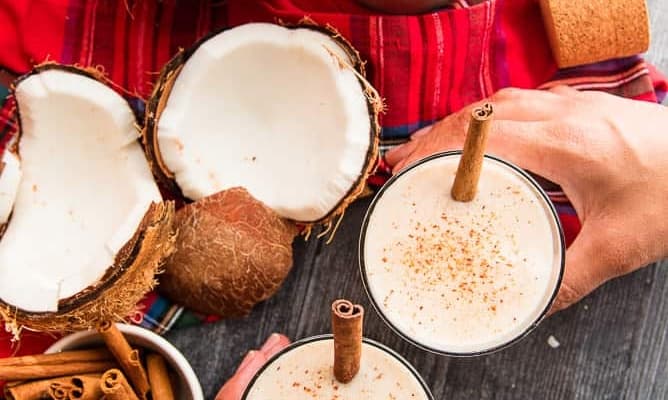
Authentic Puerto Rican Coquito
at Sense & EdibilityEquipment
- Large capacity blender
- 3 750-milliliter bottles (the third bottle won't be filled completely)
Ingredients
- 6 sticks cinnamon (optional, used for bottling)
For the Spiced Tea (optional)- Can Be Made 1 Week Ahead
- 1 cup coconut water or filtered water
- 3 cinnamon sticks
- 2 star anise
- 1 vanilla bean split
- 1 teaspoon whole cloves
- 1/2 teaspoon allspice berries optional
For the Coquito
- spice tea
- 15 ounce can (425 grams) cream of coconut
- 4 cups (960 milliliters) coconut milk or 2 13.5-ounce cans of coconut milk
- 14 ounce can (396 grams) sweetened condensed milk
- 1 cup (240 milliliters) white rum
- 3/4 cup (180 milliliters) gold rum
- 3/4 cup (180 milliliters) spiced Rum
- 1 teaspoon ground cinnamon
- 1/4 teaspoon ground nutmeg
- 1 teaspoon (5 milliliters) pure vanilla extract optional
- 13.5 ounce can (400 milliliters) canned coconut milk optional for more coconut flavor
Optional Eggnog Version
- 3 large egg yolks (very fresh)
Instructions
Sanitize Your Bottles
- Fill the bottles with very hot water and allow them to sterilize for 10 minutes. After 10 minutes, discard the hot water from the bottles, then add two or three cinnamon sticks to the bottles. Set aside while you prepare the recipe.
Make the Spice Tea
- Add the coconut water, cinnamon sticks, star anise, split vanilla bean, cloves, and allspice berries to a 2-quart pot. Bring the water to a boil over high heat and allow it to boil for 2 minutes. Turn the heat off and allow the spices to steep in the hot water for 10-15 minutes.
- After 10 minutes of steeping, strain the tea into a blender and add the cream of coconut. Gradually whisk in the warm tea into the egg yolks, if you're adding them, now, as well.If your tea feels cool to the touch, heat it again until it steams, then add it to the blender or a bowl with the cream of coconut. Press the paste from the vanilla bean into the tea in the blender after straining the spice tea into the blender.
Blend the Coquito
- Add the coconut milk, condensed milk, all three rums, ground cinnamon, nutmeg, and vanilla extract (which is optional) to the blender with the spice tea and cream of coconut. *You can add canned coconut milk to the blender and the rest of the ingredients if you want a richer, creamier-tasting coquito. Blend the ingredients for 1 minute on medium-low speed until smooth.
Bottle and Cure the Coquito
- Put a fine-mesh sieve lined with a clean tea towel on a funnel. Carefully pour the liquid through the strainer and into the bottles using the funnel and leaving a 1-inch headspace at the top of each bottle of coquito so you can shake the spices back into it later.
- Refrigerate and let the coquito chill for at least forty-eight hours to allow the flavors to blend and the alcohol flavor to mellow out.
Garnish and Enjoy Responsibly
- To serve coquito, remove the bottle from the refrigerator and give it a good shake to reincorporate the spices. Serve the coquito in old-fashioned glasses with a sprinkle of ground cinnamon or grated from cinnamon sticks.
Notes
-
Tea-less Coquito:
Replace the whole spices with the following:
- 1 1/2 teaspoon ground cinnamon
- 1 teaspoon vanilla extract
- 1/2 teaspoon ground ginger
- 1/4 teaspoon ground nutmeg
- 1/4 teaspoon ground cloves
- pinch of ground allspice
Add these spices to the coquito omitting the additional ground cinnamon and nutmeg from the recipe.
- For Virgin Coquito:
- To make virgin coquito, replace the rums with more coconut milk or half-coconut milk and half-coconut water (or regular water)or more spice tea.
- Use a box of coconut water if you don't have fresh, or you can replace it with plain water.
- You can omit the vanilla bean if you don't have one and add the optional vanilla extract to the blender with the rums later.
- You can replace the gold and spiced rum in this recipe with light rum if you prefer to keep it simple.
- Make a more potent version by using 151. This type of rum is an over-proofed spirit and will give it more kick.
- Palo Viejo, Don Q, Ron del Barrilito, or Bacardí, which is Cuban-born, are rums made in Puerto Rico.
- You can make dairy-free or vegan coquito by replacing the sweetened condensed milk with condensed coconut milk.
- Use soy milk, almond milk, or oat milk if you decide to replace the optional canned coconut milk in this recipe with evaporated milk.
- Don't add eggs if you want to make this a vegan coquito recipe.
- Omit the cinnamon sticks if you don't keep them on hand.
- It's helpful if the spice tea is still warm so it can melt the fat cap that usually tops the cream of coconut.
- Virgin coquito has a shorter shelf-life because there's no alcohol to ward off bacteria. You'll have to consume the virgin drink within 10 days of making it.
- The chunks (or lumps) in the coquito are from coconut fat in the cream of coconut. Shaking the can of cream of coconut and warming it with the spice tea will reduce the chunkiness.
- Cream of coconut is not the same as a can of coconut cream. The latter contains no sugar, whereas the cream of coconut is sweetened.
- When using fresh coconut milk, a small amount of separation occurs because it doesn't contain the stabilizers as canned coconut milk.
- You can serve coquito over ice, but it waters down the drink.
- To impress coconut lovers, dip the rim of your cocktail glass in a small amount of maple syrup, followed by a dip in coconut flakes to create a coconut rim.
- You can store coquito made with alcohol in the fridge for up to 1 year, even with the addition of eggs. The longer the coquito cures, the smoother and more profound its flavor is, as with traditional eggnog.
- Coquito made without alcohol should be consumed within a week, or 7 days, of mixing it.
- Coquito that contains alcohol can be frozen for more than one year in a freezer-safe bottle or airtight container. The consistency will be more like a milkshake instead of freezing solid.
- Virgin coquito freezes solid, so store it in a freezer-safe container for up to one year.
- Thaw frozen coquito in the fridge when you're ready to enjoy it, shaking it well to mix it evenly.

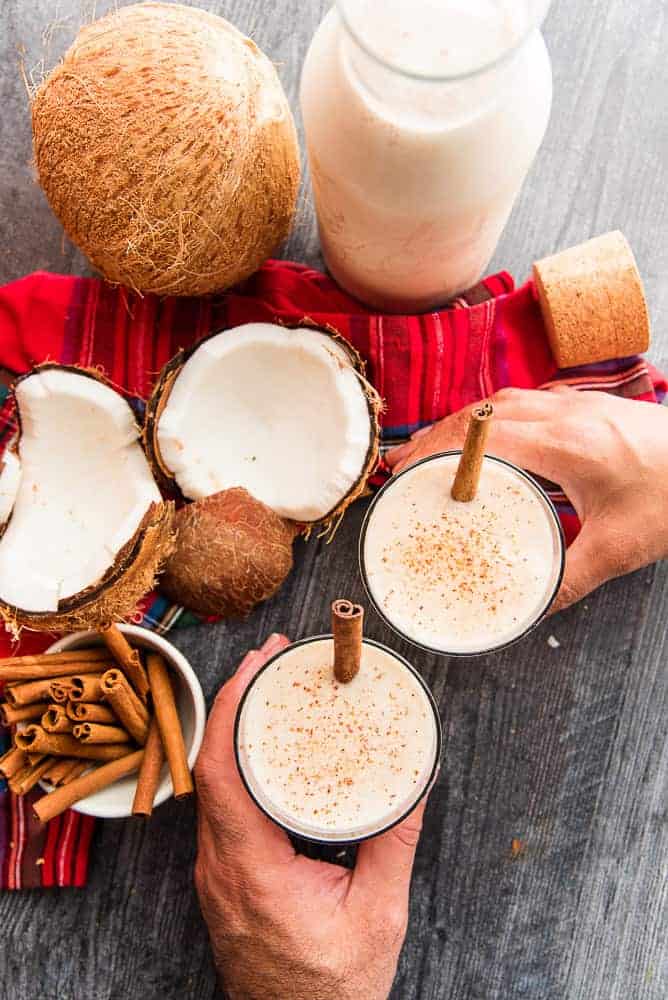
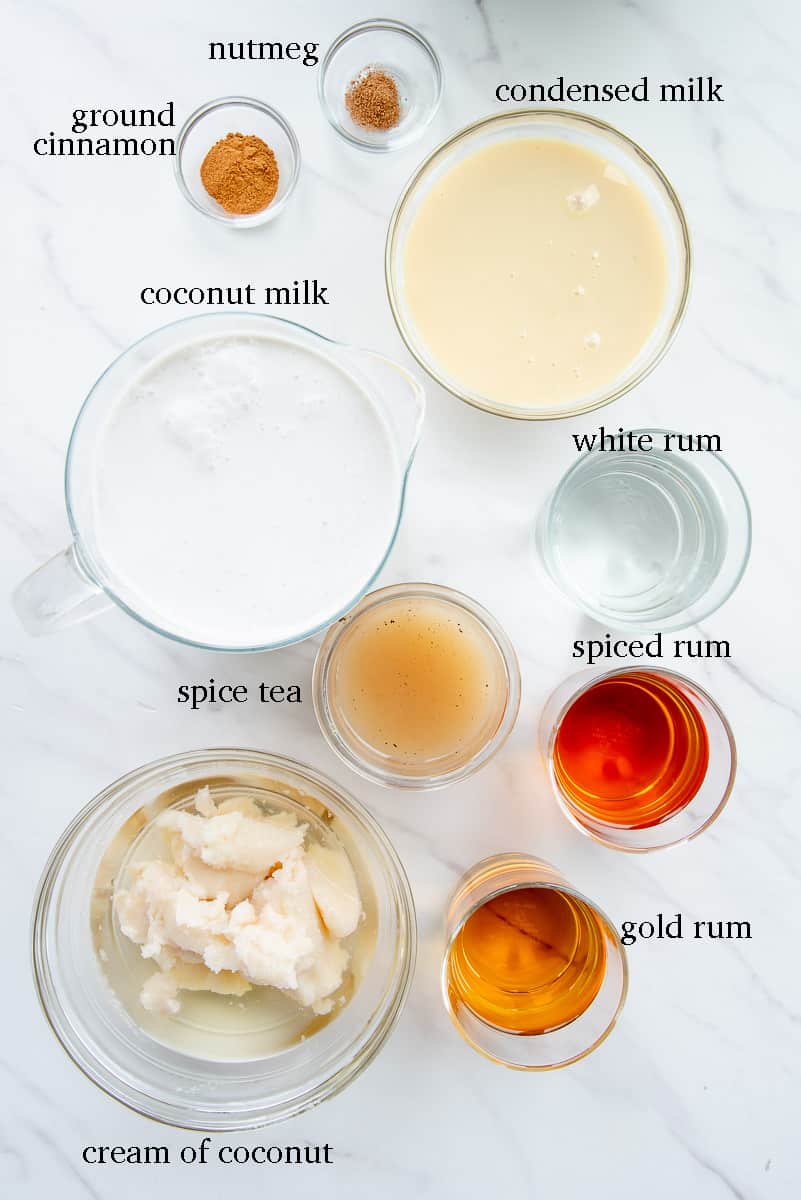
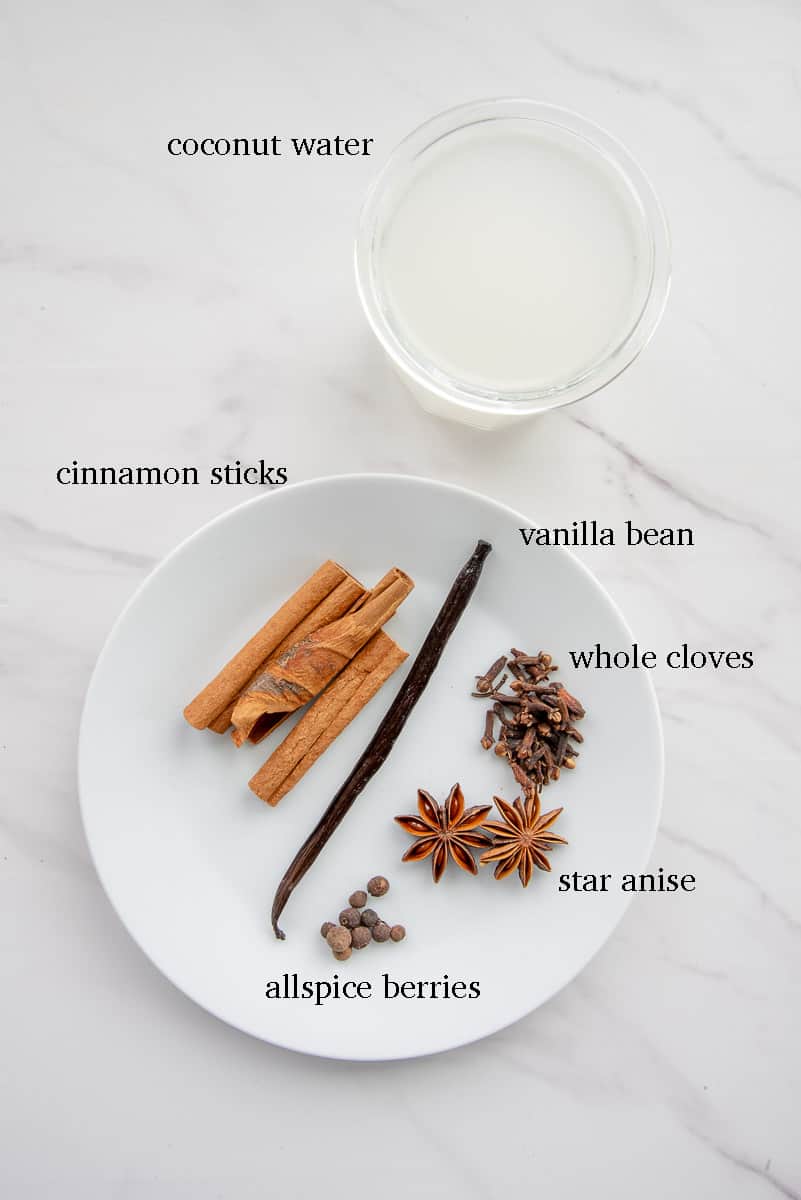
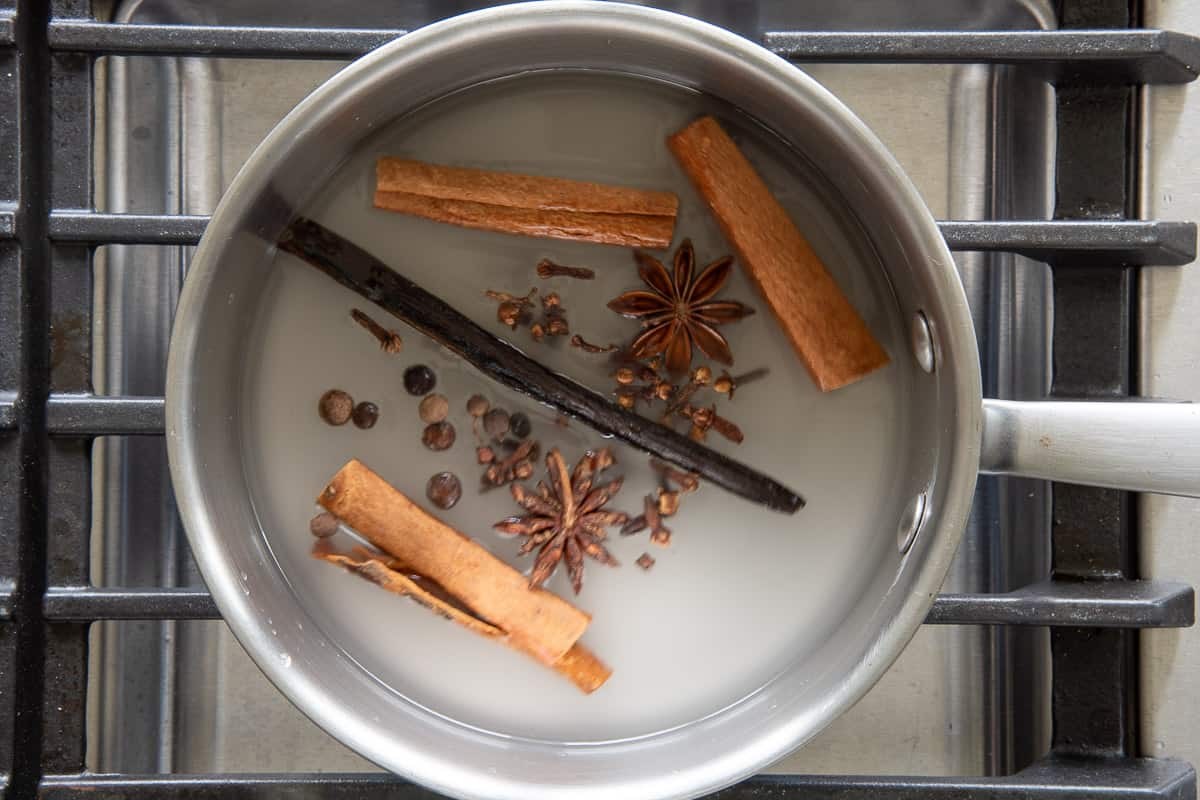
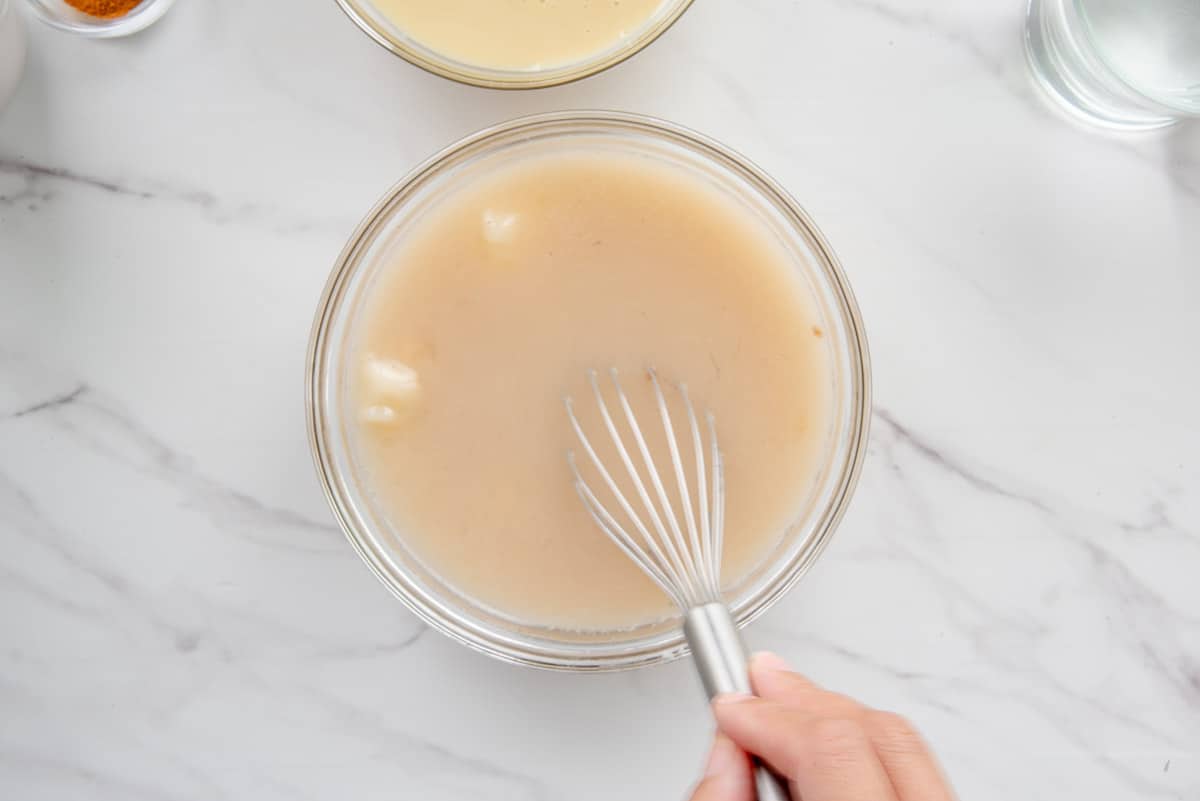
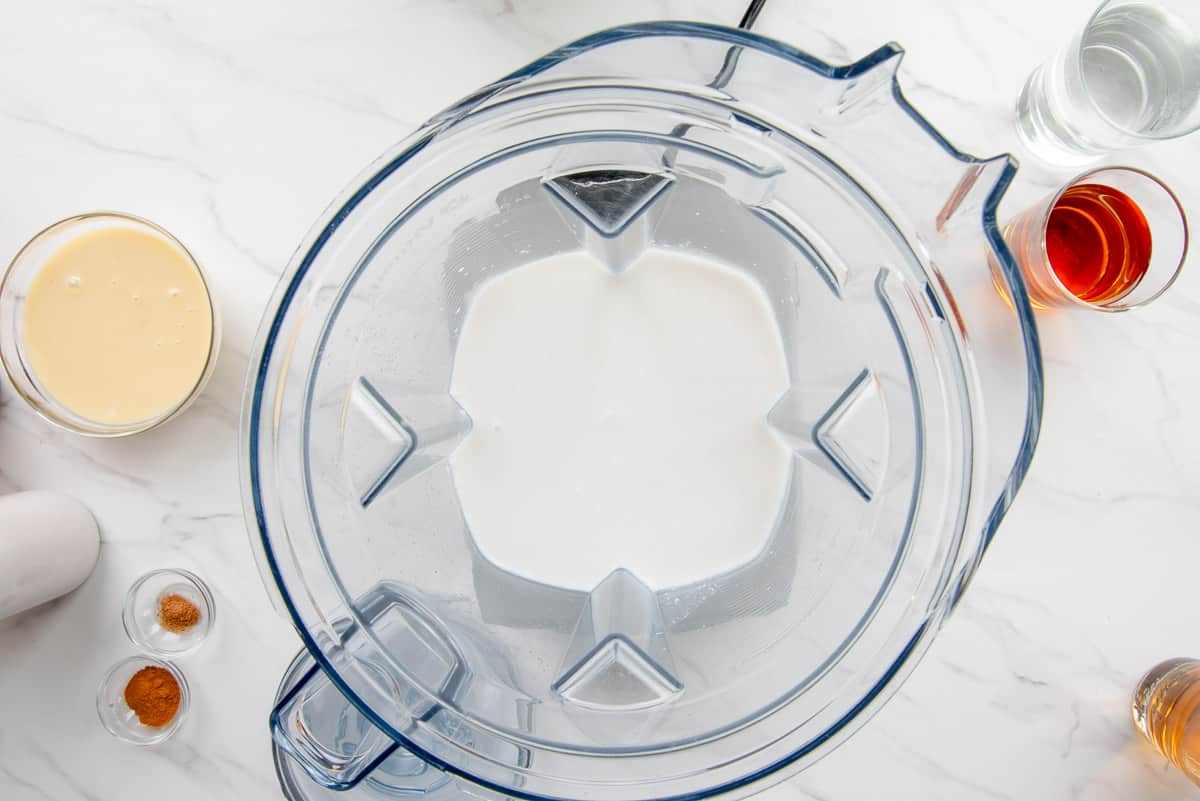
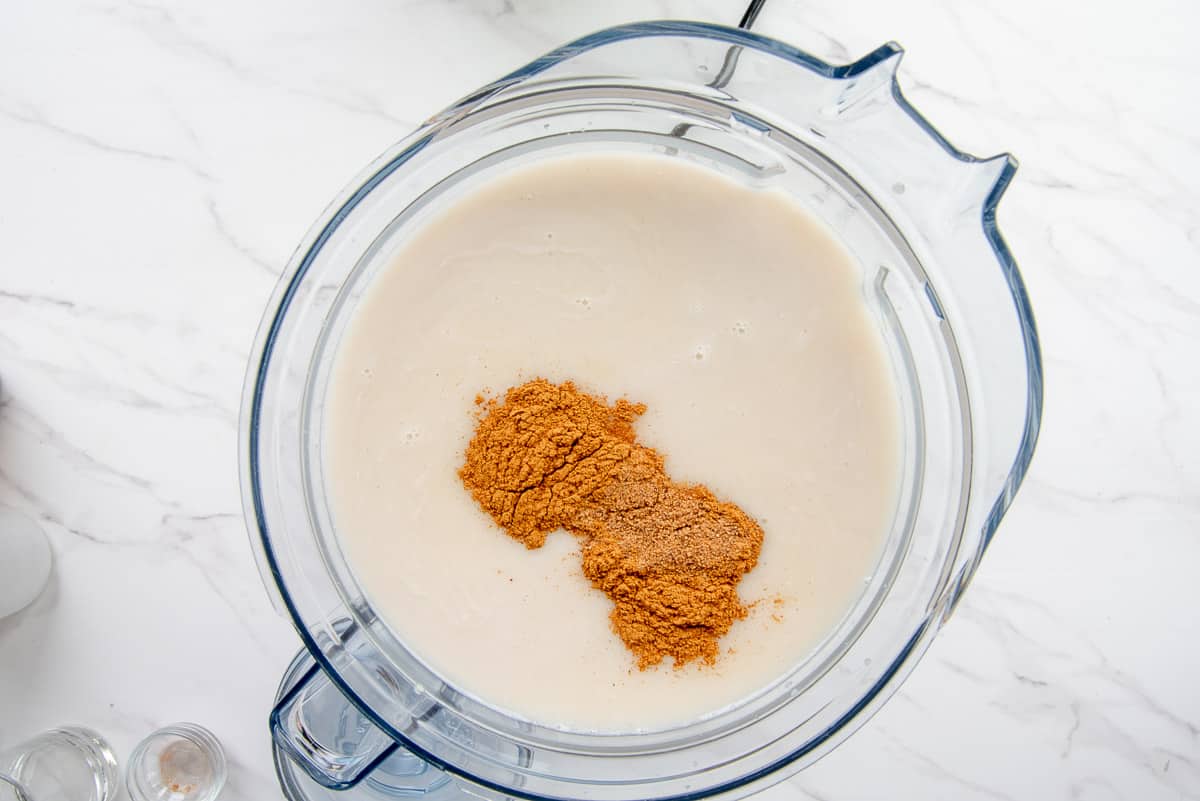
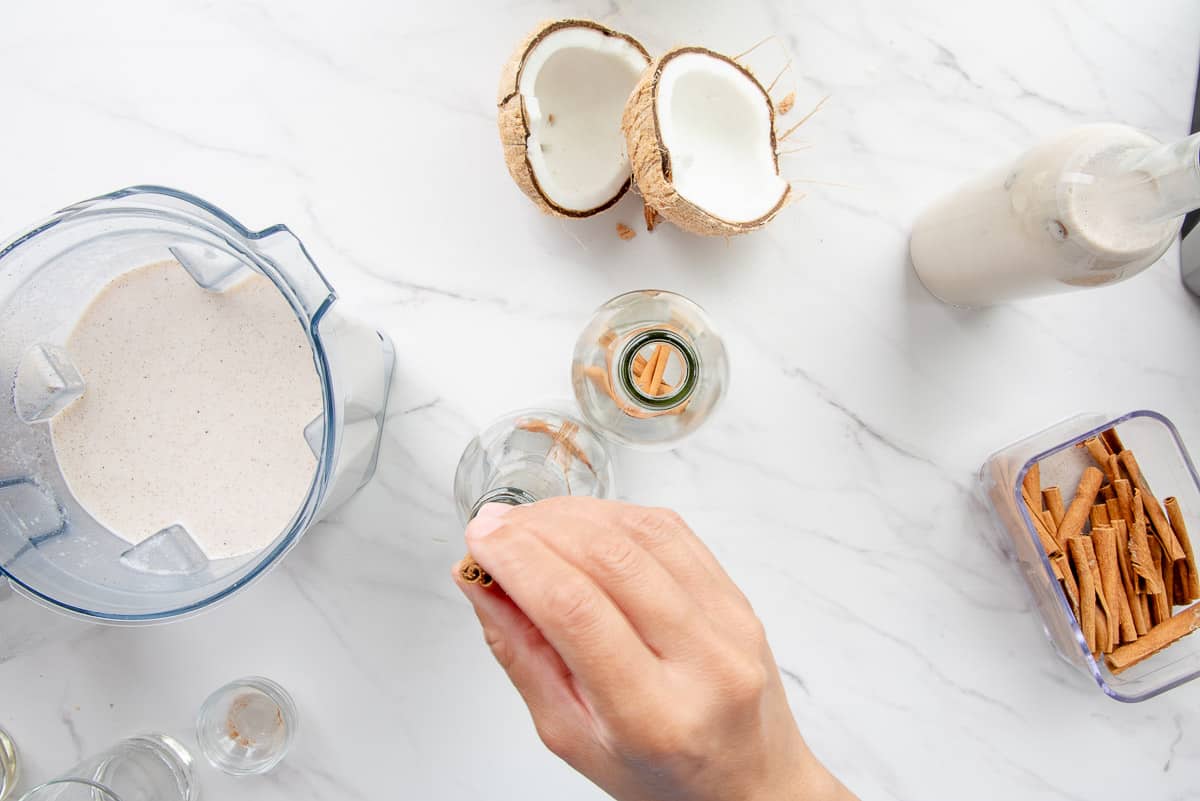
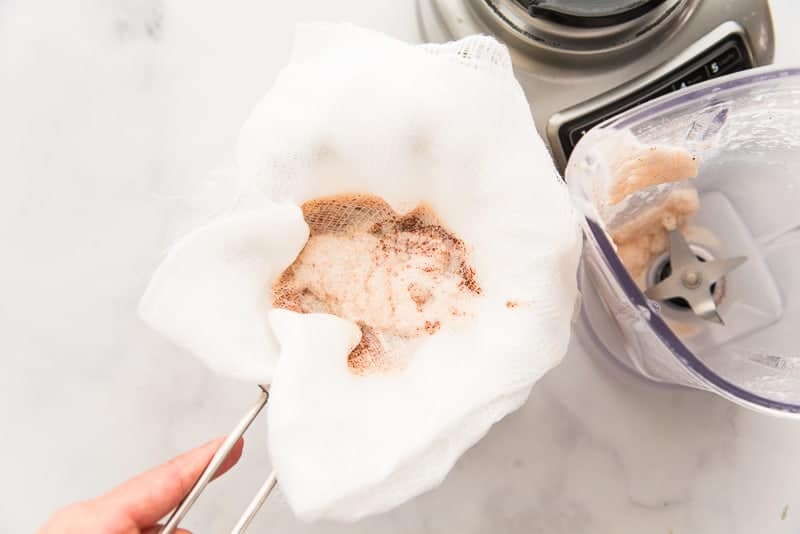
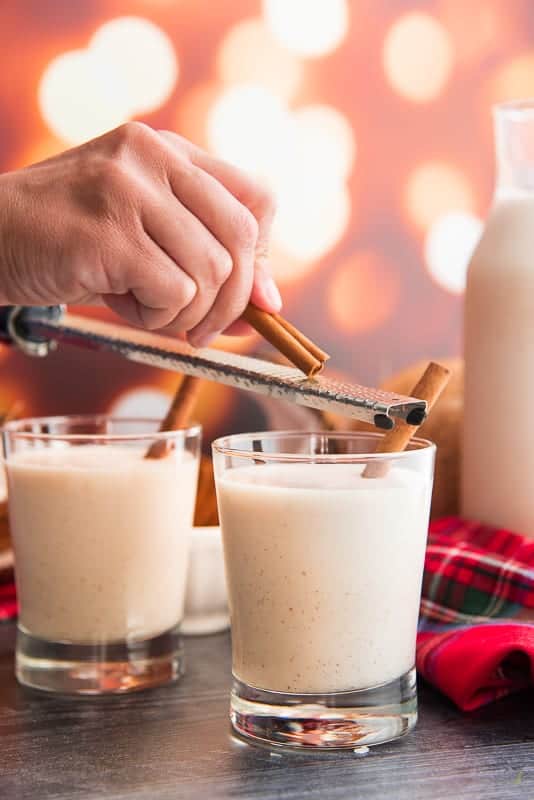
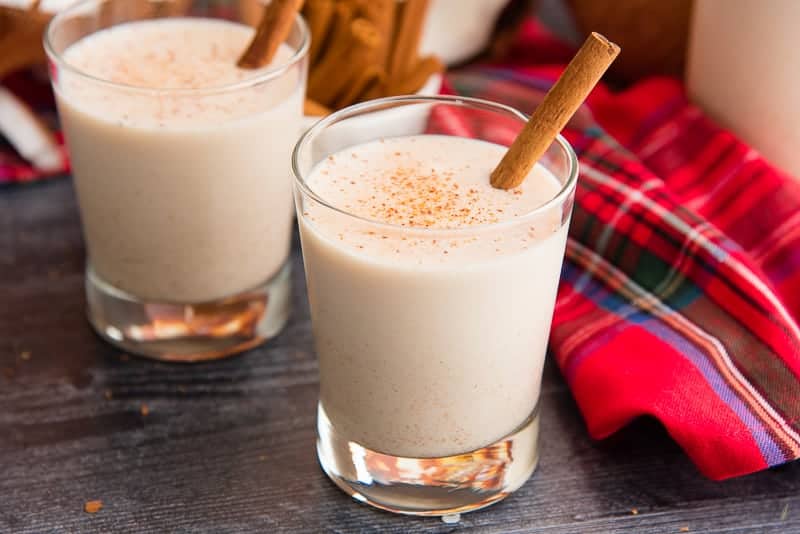

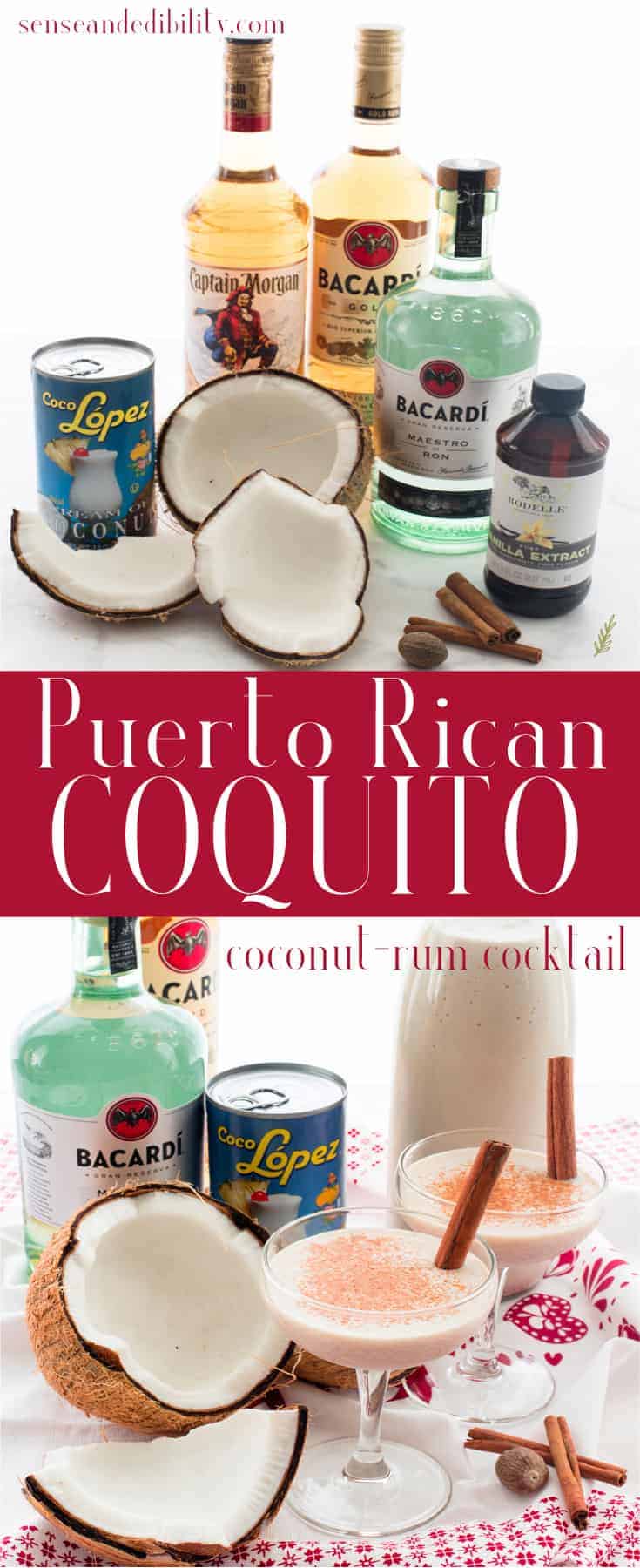
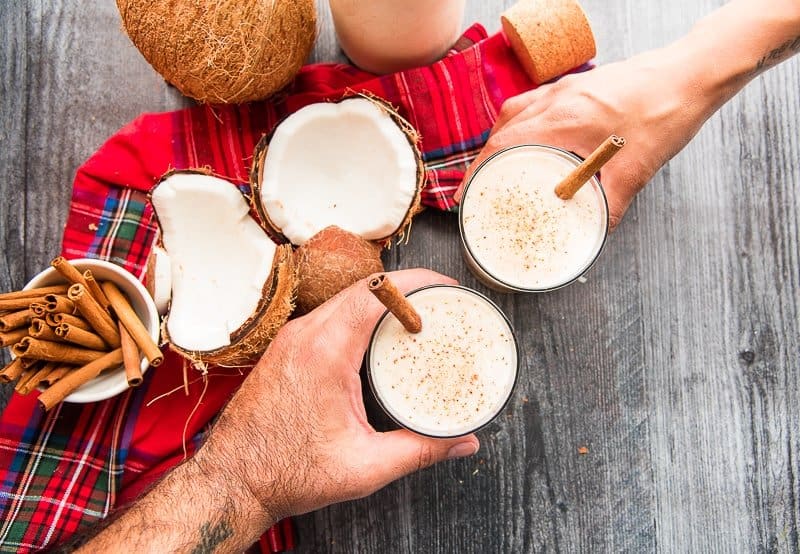


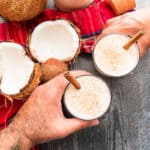


Marta, I used the extra can and I also used sweetened condensed coconut milk instead of regular milk to keep it dairy free for my daughter. It was great and blended well the day after but now a week later it is separated and looks like it solidified in the fridge. I do keep that particular fridge cold but it’s not a freezer. Can I run the bottle under warm water with the lid released? I don’t want to boil off the alcohol just warm it to melt the coconut back into solution. I believe the substitution of the condensed coconut milk caused this and was wondering if the warming is the best workaround and if there is anything else I could do to avoid this or if it’s as good as it gets to have this great flavor and dairy free. Thank you!
Yes, I have also found that you’ll have firmer results because coconut fat is more solid at chilled temps than cow’s milk fat. I would set the bottle of coquito into a deep pitcher and run warm water into the pitcher for about 5-10 minutes. This should warm the fat gradually so you can shake it every other minute. You can determine if it’s fluid enough to pour as it loosens. This won’t burn off the alcohol in the slightest. I also recommend smelling it before you drink it. Sometimes, when the coquito has remained separated for too long, the sweetened water begins to ferment and sour. If it smells like vomit (sorry, there is no better way to describe it), you’ll have to throw it away. If it smells like coconut, pour it through a strainer lined with a clean kitchen towel. This strains a lot of that coconut fat, making it more fluid. I hope this helps.
Happy New Year.
A few questios. If I’m going to use canned coconut milk. Do I just use 2 cans or also add the optional can as a third can?
Also how many ounce blender will I need for this? I count 8 oz for spice tea, 15 oz for creme of coconut, 27 oz for the 2 cans of coconut milk, 14 oz for the condensed milked, and 20 oz total of rum. Looks like 84 oz. Does that sound right?
I have a 64 ounce blender and everything fits in there perfectly. It does nearly fill it, but since we’re starting on low and not using anything that foams up terribly, it fits. Most blenders, that are labeled “high capacity” are 64 ounces and should work. If you’re adding eggs you’ll need to divide the recipe in half. If you don’t have a high capacity blender, add everything to a large bowl, then you can add it to the blender in batches to mix it thoroughly. If you have an immersion blender, you can mix everything right there in the bowl. Hope this helps.